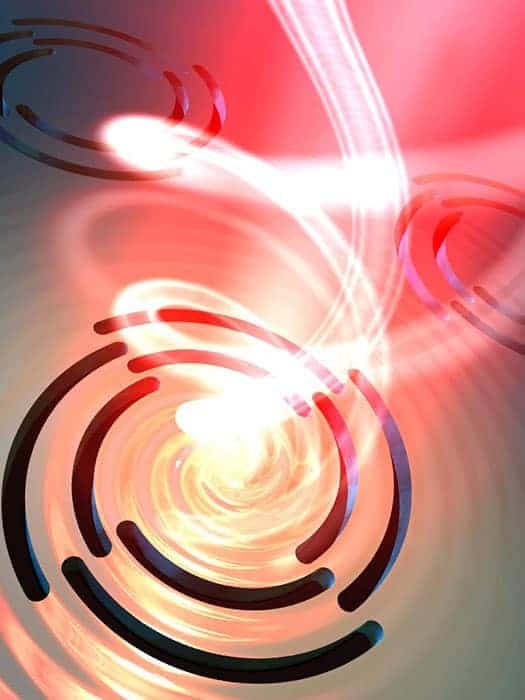
Plasmons in 10 different angular-momentum states have been created and characterized by physicists in Israel and Germany. Created by firing laser pulses at a specially designed gold surface, movies of the plasmons in motion were made with an electron microscope. The researchers believe their work could lead to the development of tiny devices that encode information in the angular momentum of the plasmons.
Plasmons, which are collective oscillations of electrons in metals that behave like quantum-mechanical particles, can be created by firing light at a metal target. They behave much like the photons that created them but have much shorter wavelengths and so could be used to create tiny “plasmonic” circuits that can process optical signals while taking up much less space than conventional optics.
Capacity boost
The new work builds on physicists’ ability to create beams of “twisted” light that carry orbital angular momentum. Information can be stored in the orbital angular momentum states of these beams and this has already been used to boost the capacity of prototype optical networks. What physicists at Technion and the Universities of Kaiserslautern, Duisburg-Essen and Stuttgart have now done is to come up with a way of creating “twisted plasmons” that could be used to boost the capacity of plasmonic circuits.
The plasmons were made by firing an ultrashort laser pulse – lasting just 13 fs – at a special target that is made from an atomically flat single crystal of gold. The team etched “Archimedes spirals” – with radii that are a linear function of the rotation angle – into the surface. These caused the excited electrons to swirl in one direction, creating plasmons with orbital angular momentum.
Motion pictures
The plasmons were characterized by firing a second laser pulse at the gold surface, which causes electrons to be ejected. These electrons were observed using an electron microscope, providing a snapshot of the collection motion of the electrons. The time evolution of the plasmons was traced out by varying the delay between the two laser pulses – allowing the team to make movies of the plasmons in motion.
Technion’s Grisha Spektor came up with the idea of varying the geometry of the Archimedes spirals, which resulted in the creation of plasmons in 10 different orbital angular momentum states.
As well as having the potential to increase how much information could be processed in plasmonic systems, the twisted plasmons could also prove useful for studying 2D systems such as topological insulators and ultrathin magnetics. Other applications could include the rotation of tiny particles in “plasmonic tweezers” and imaging on the nanometre scale.
The research is described in Science.



